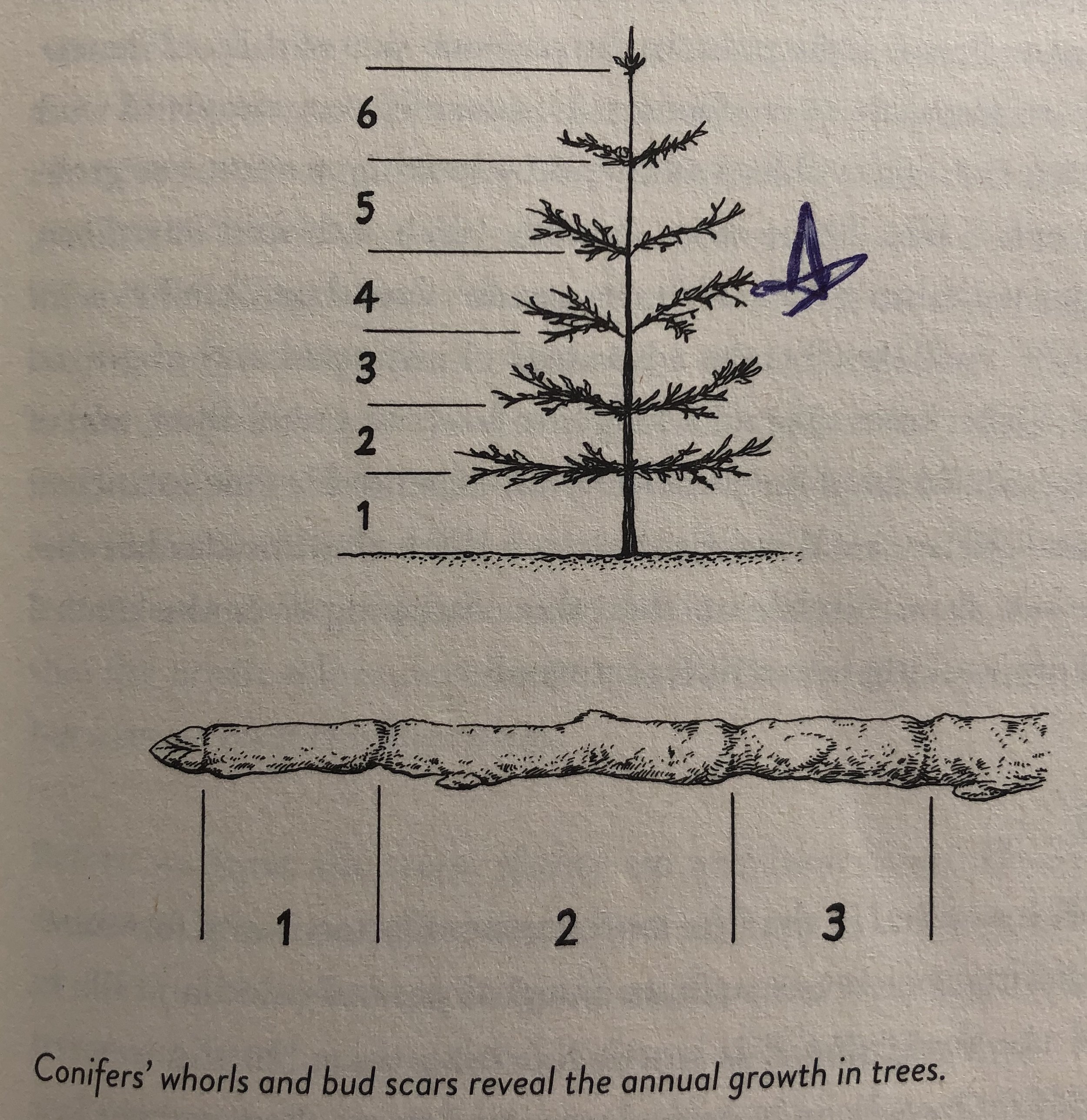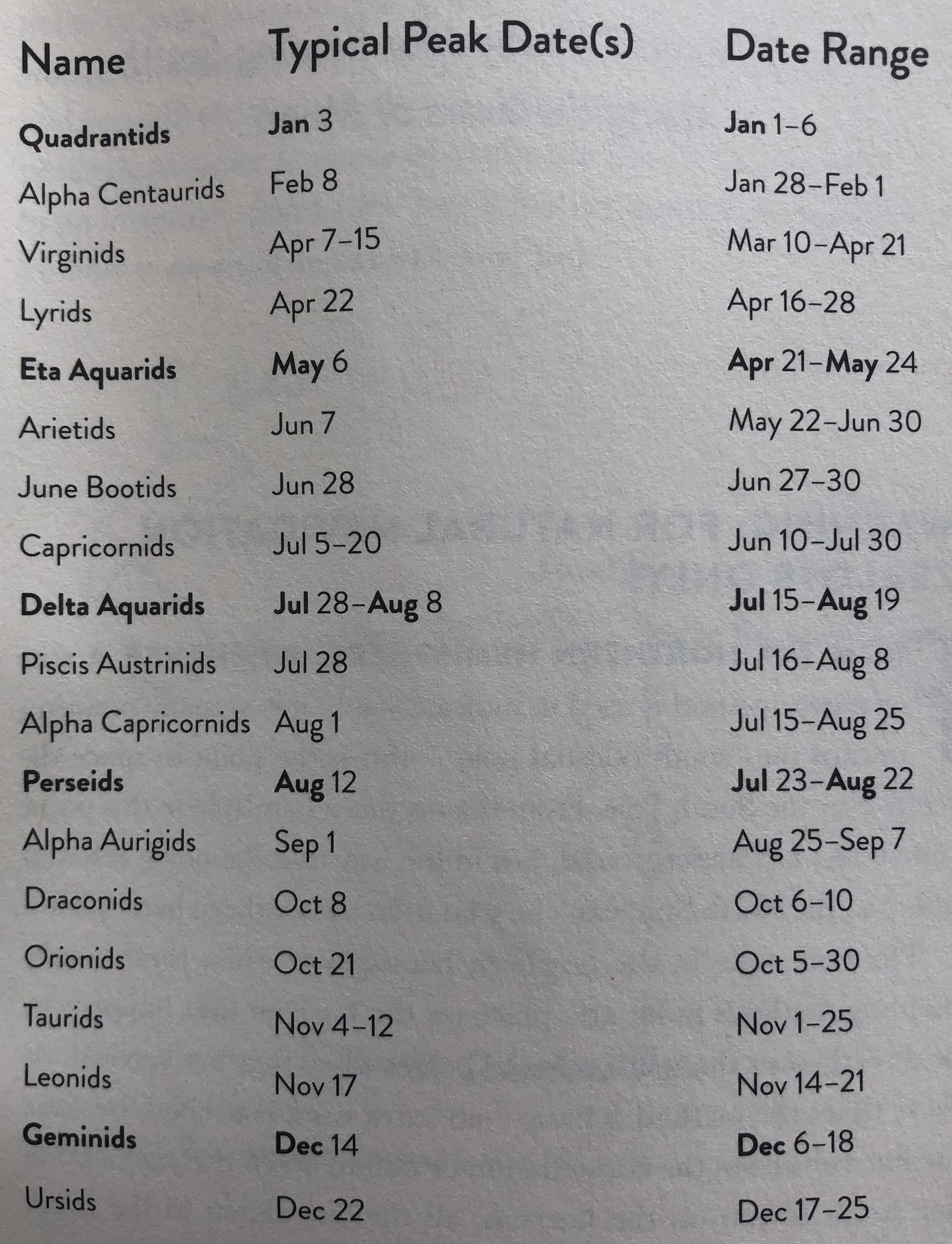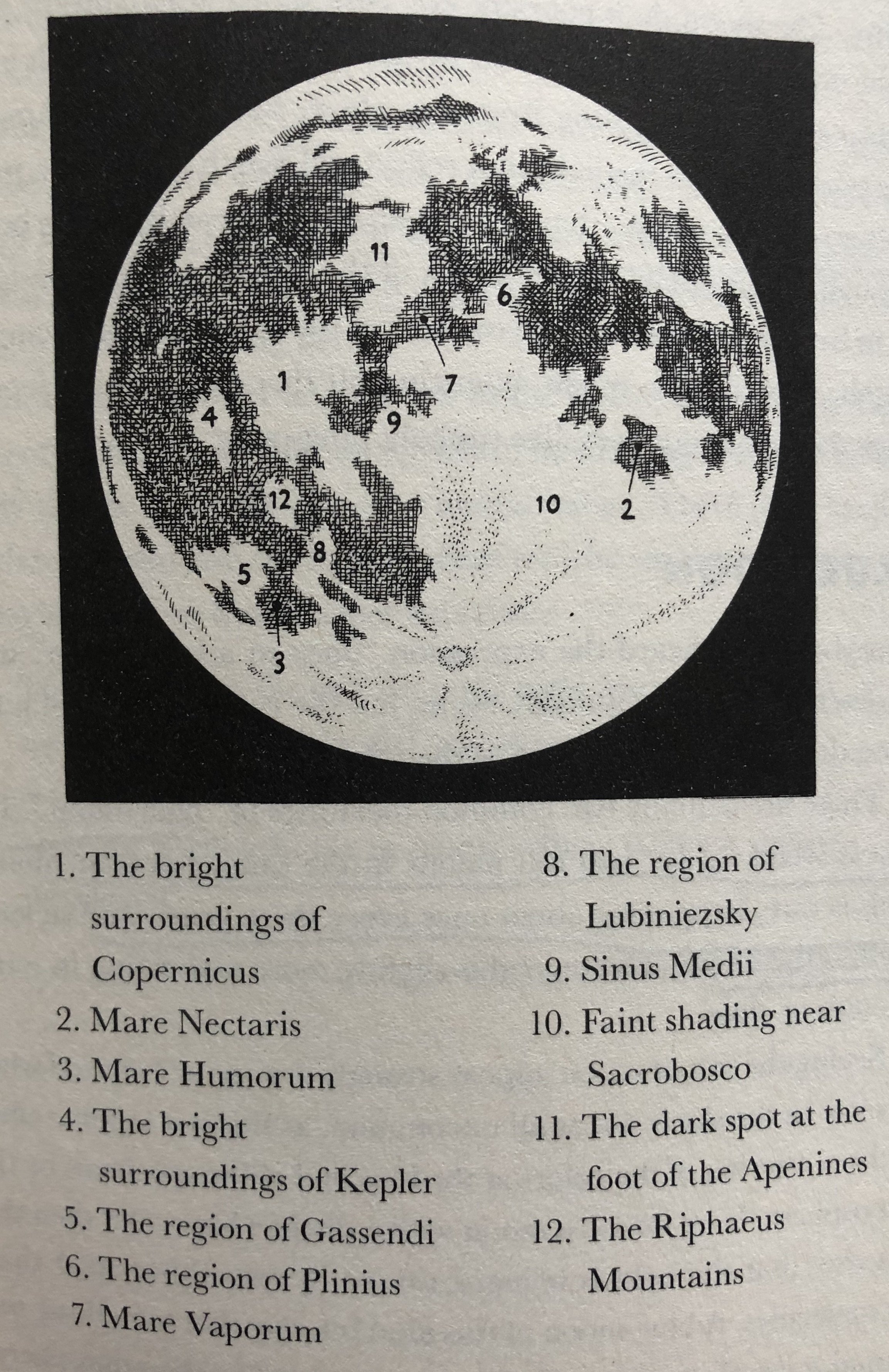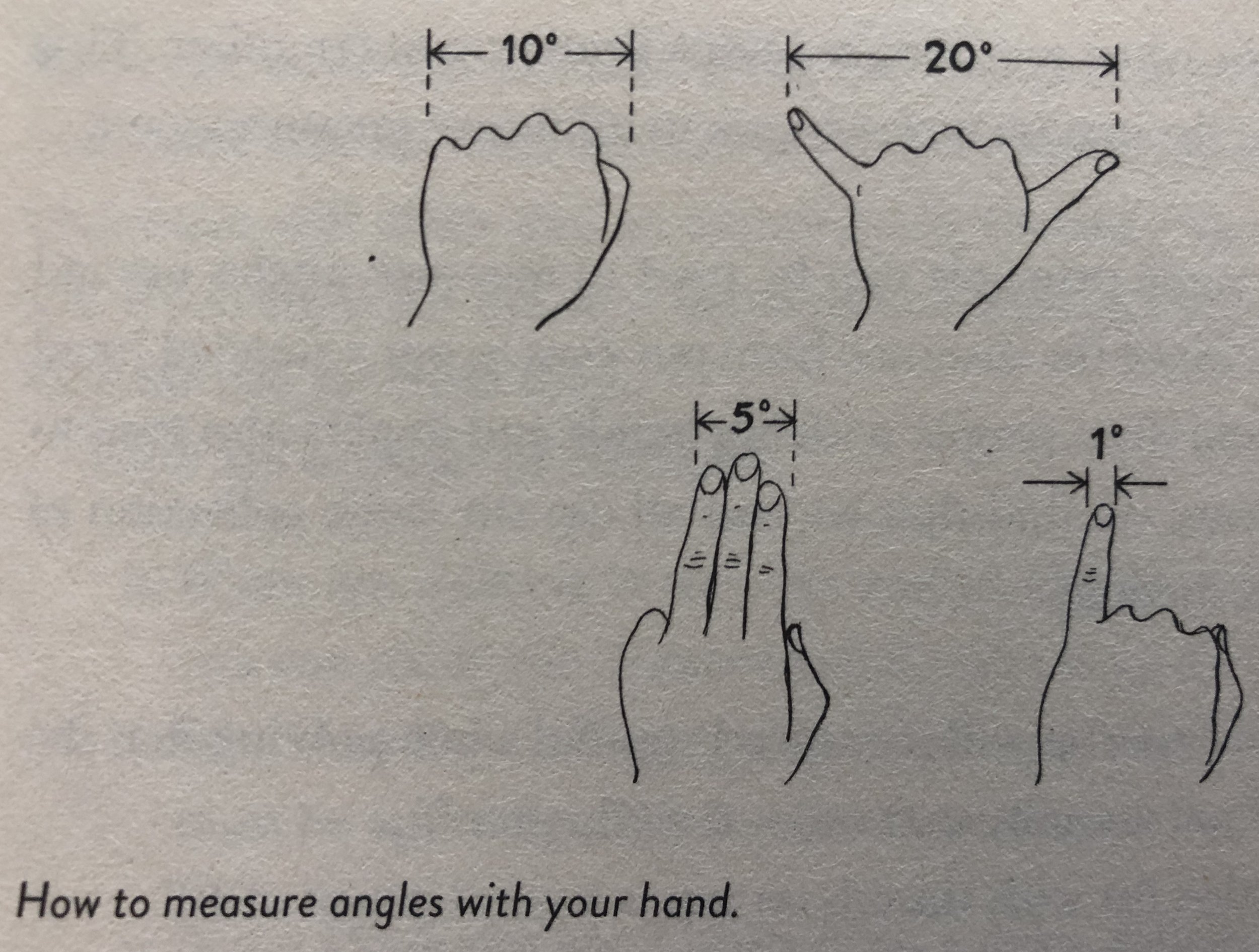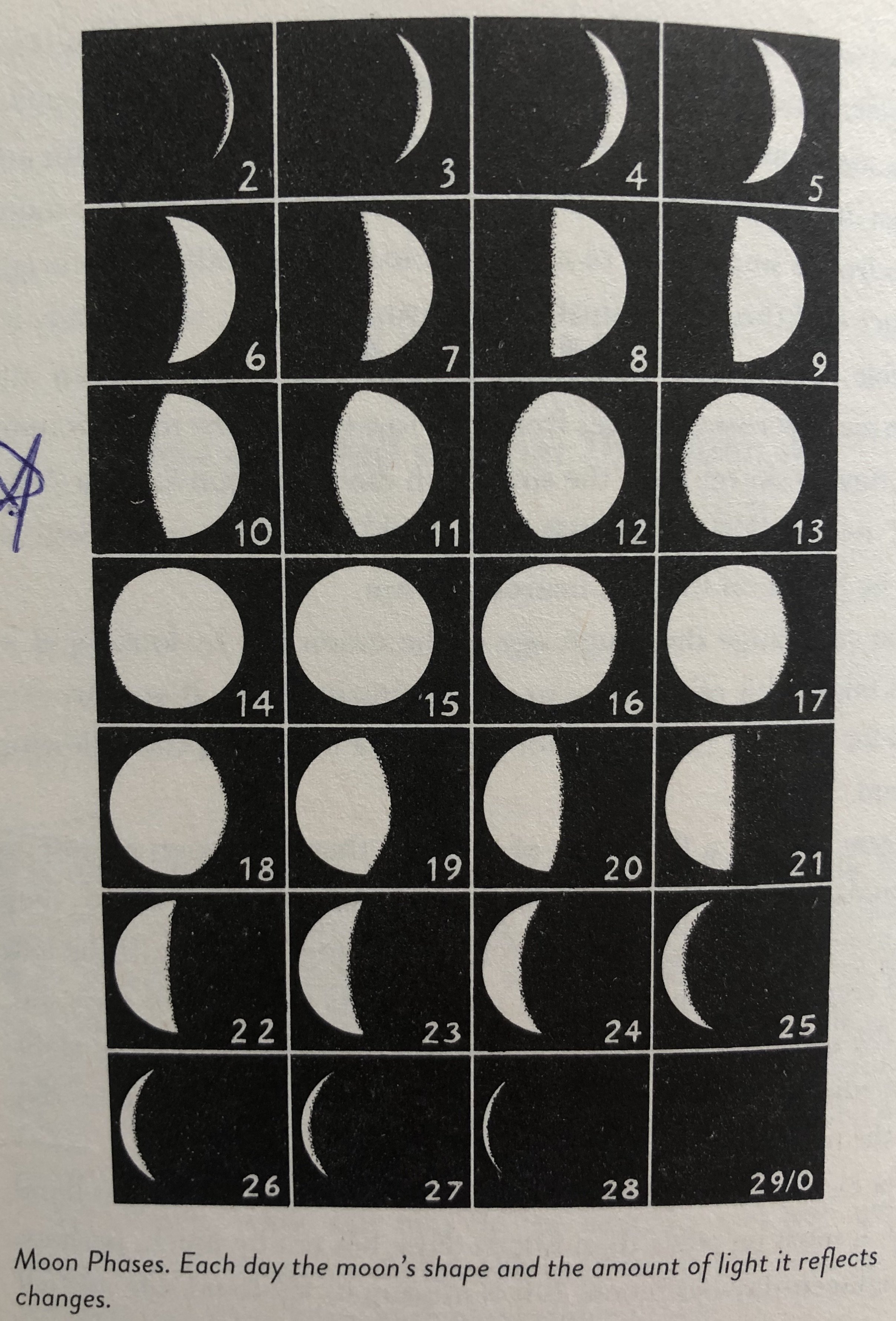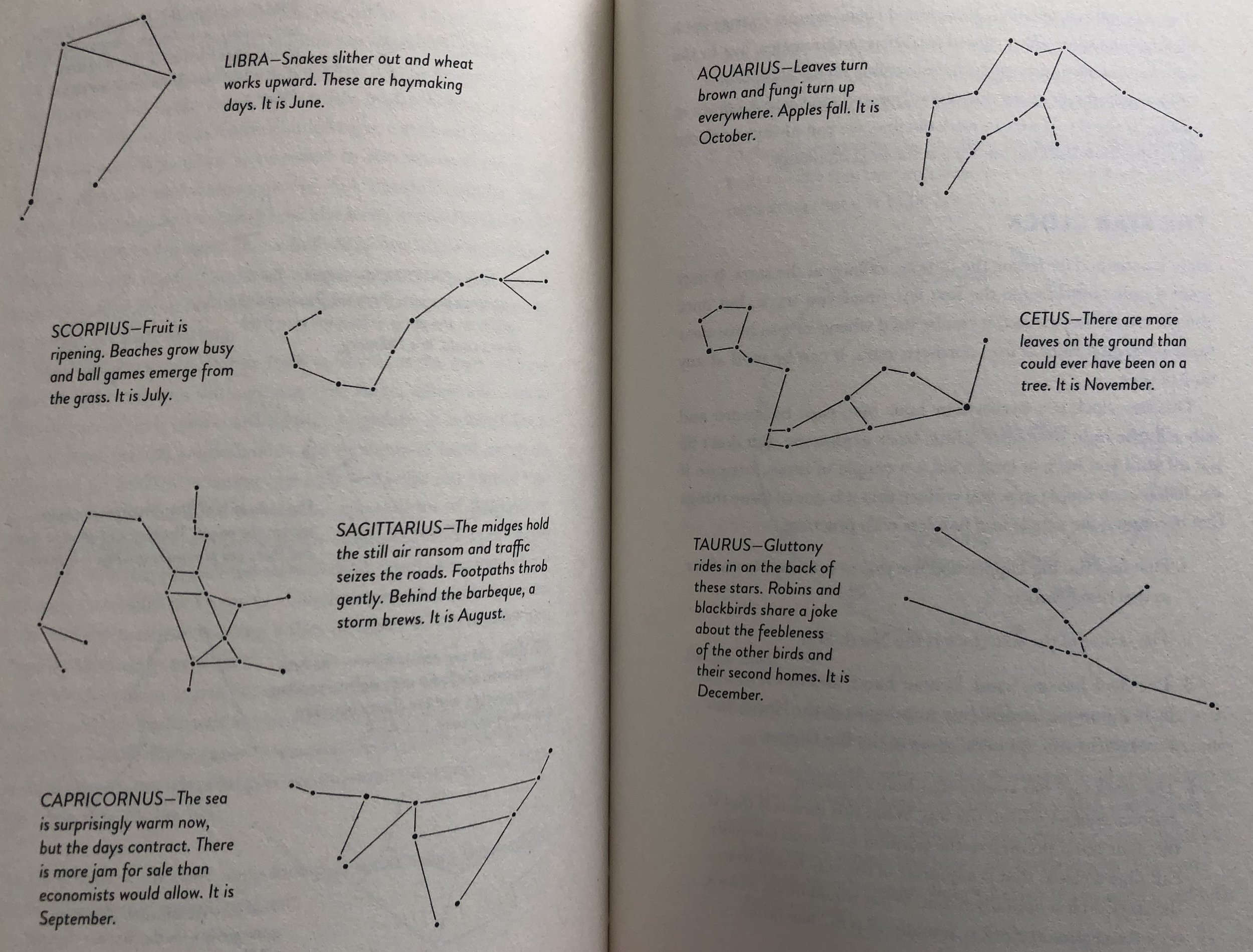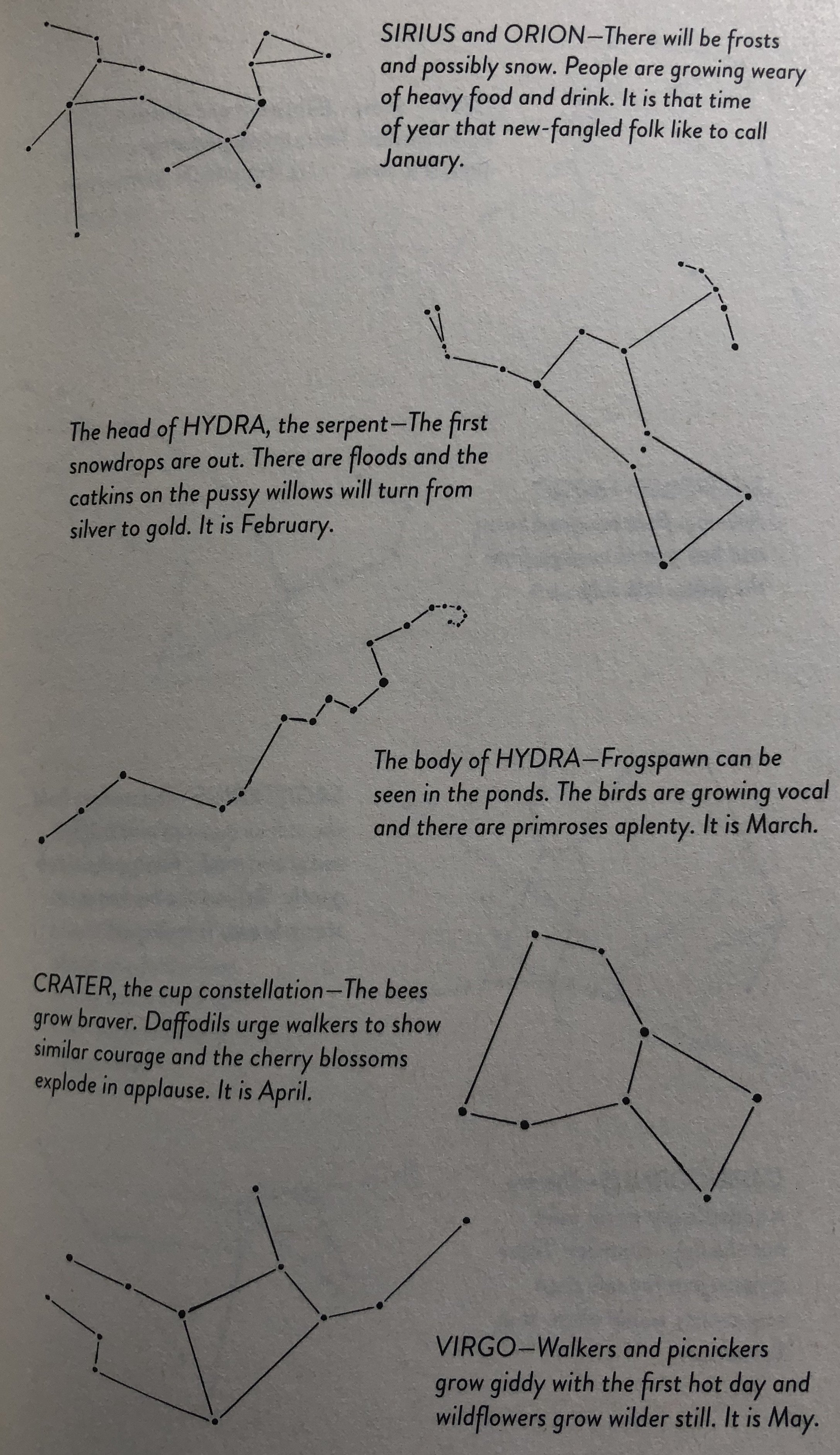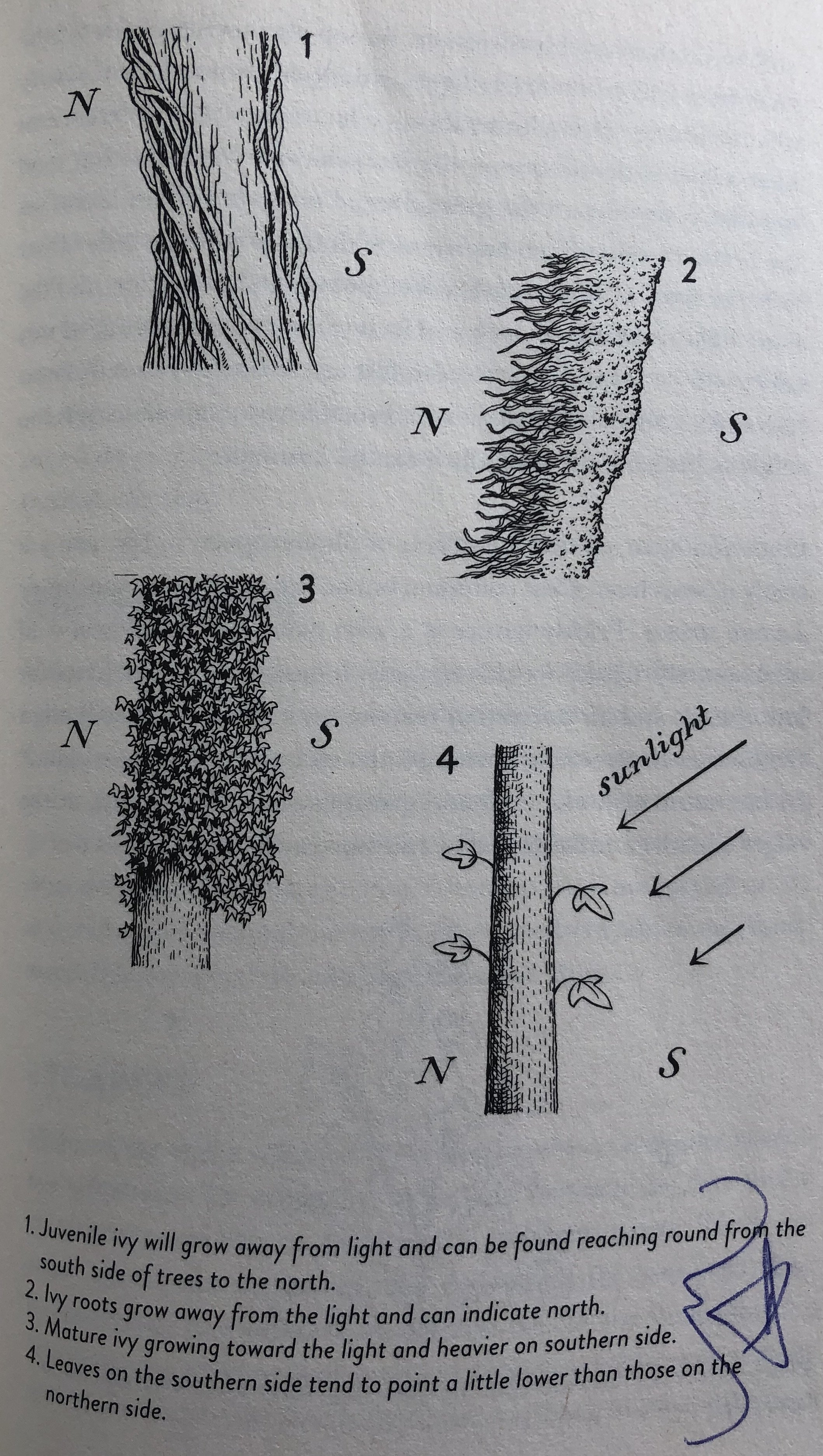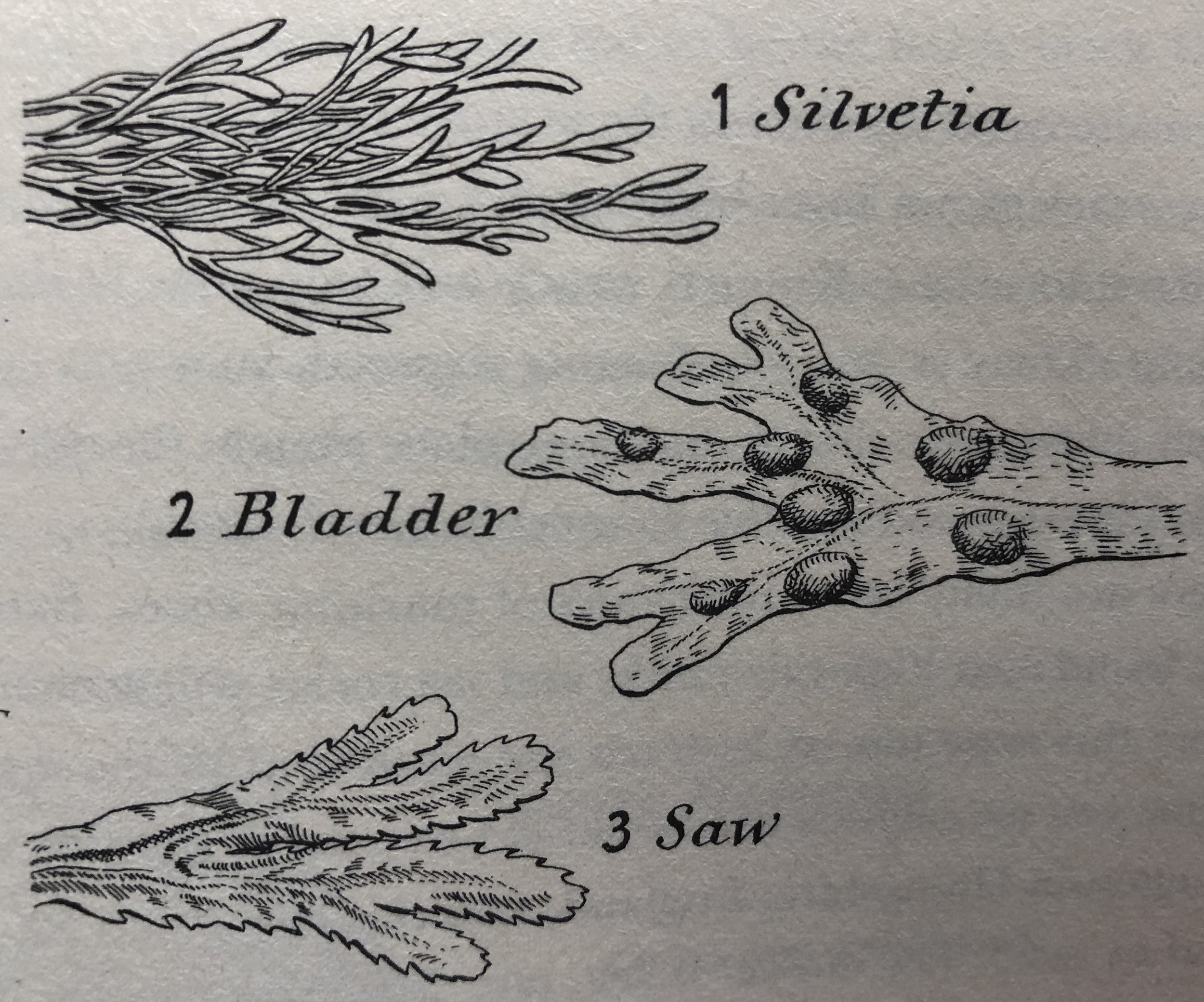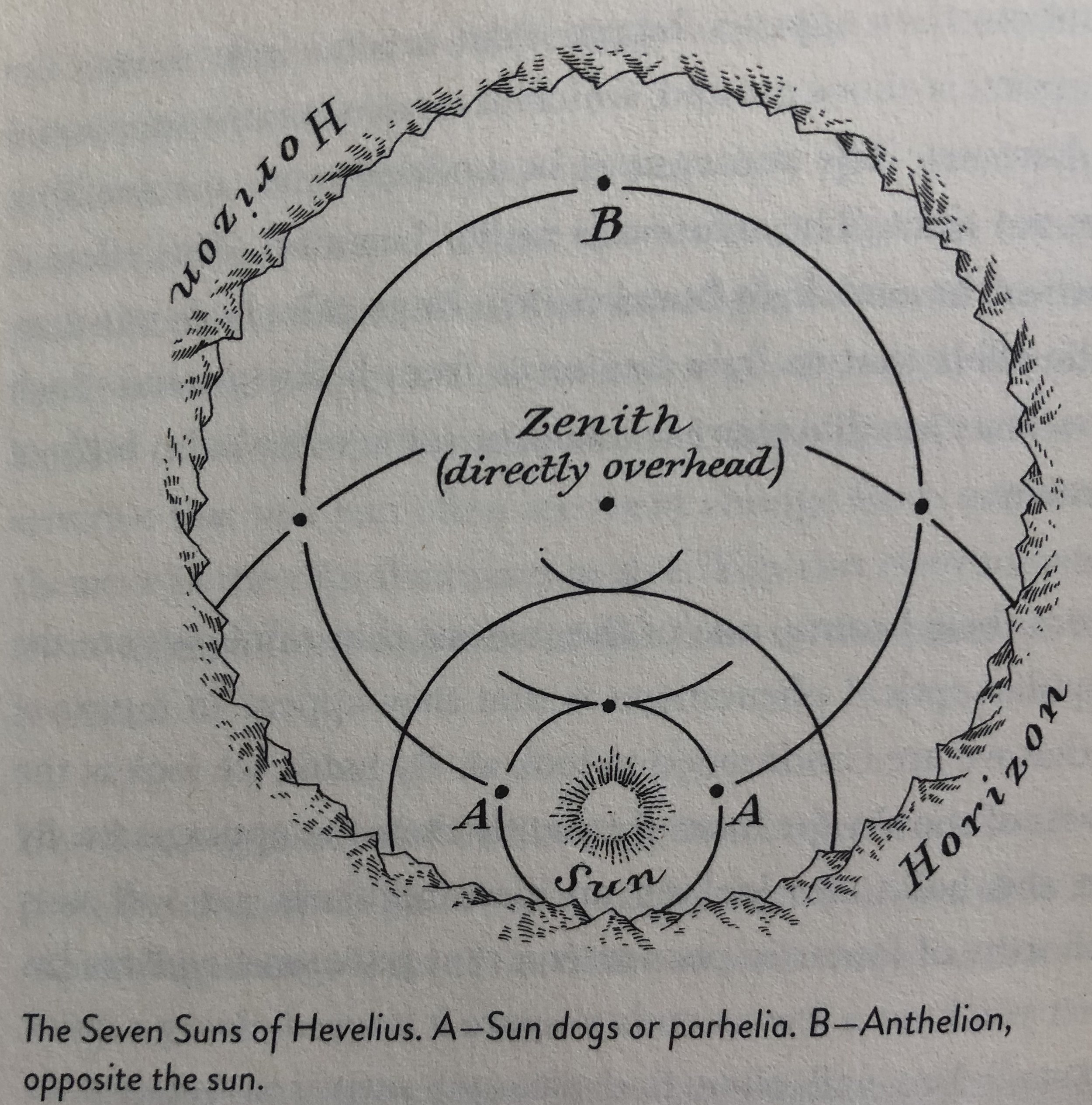The Lost Art of Reading Natures Signs by Gooley
Ref: Tristan Gooley (2014). The Lost Art of Reading Natures Signs. The Experiment.
________________________________________________________
Summary
How to use outdoor clues to find your way, predict the weather, locate water, track animals, and other forgotten skills.
________________________________________________________
Ch. 1: Getting Started
Fog: During a temperature inversion, there is a high chance of fog in the evening or morning.
________________________________________________________
Ch. 2: Ground
Balance: When balancing, look at solid ground, never moving objects like water.
The darker the soil, the more organic matter there is in it and the more nutrients it will contain.
High Fe Soil: Soil that is Red, Yellow, or Grey.
Leached Soil: Grey Soil.
Target Enlargement: Recognizing the clues around a target rather than the target itself.
________________________________________________________
Ch. 3: Trees
Soil: Trees are sensitive to the acidity of the soil. Beech, yew, and ash prefer alkaline soils, whereas oaks, sycamore, birch, and linden are more tolerant of acidity. Scots’ pines and rhododendrons are strong indicators of an acidic soil.
Bark: Fast growing trees stretch their bark, giving it a smooth appearance. A heavily grooved, plated and rough bark is the sign that a tree has taken its time in reaching maturity.
The bark of a tree will often appear noticeable darker on its N. than its S. side.
Age: The size of trees are a rough clue to their age. You can refine this by remembering that broadleaved trees, such as oak, ash, and beech, growing in the open have a circumference in cm that is two and a half times their age (nearly a 1:1 ration in inches), so if two adults can barely touch each other’s fingers around a trunk, the tree must be getting close to 150 years old. In woodland, the circumference grows nearer half the speed, and it would be a much rarer 300-yr old specimen.
Trees have definite levels of branches, each level or whorl corresponding to a year’s growth.
Size: There is a strong correlation between the availability of water and the height a tree grows. Dry soils host short trees; dry soils in windy areas host very short ones.
Roots will spread between 2-3x the width of the canopy above (~1-1.5 x Height).
The more wind a tree has to tolerate, the shorter it will grow and the stouter its trunk becomes.
Season: The main factors affecting tree growth and leave shed- day length, temperature, and soil moisture.
Flagging: Tree branches that point away from the prevailing wind with branches stripped away on the windward side. Flags point away from the prevailing wind.
Root Collar: A tree’s root collar anchors the tree against the prevailing winds and can be used to find direction.
Sunscreen: Trees secrete their own sunscreen giving off a noticeable difference on the sunnier side of the tree.
The less acidic the bark is, the more growth you are likely to see from colonizing plants and lichens.
Tree Stresses
Spiraling: Two reasons for trees growing in a spiraled way:
Genetic Pre-disposition: Some trees are genetically predisposed to it (i.e. American chestnut).
Torsion: If the tree is exposed to the wind on only one side, this will have a torsional effect on the tree every time the wind blows.
Twisted Rib: A hard thin protuberance that works its way up and around the tree; the symptom of an internal fracture caused by excess stress on the tree. If the rib is smooth and rounded, it means the tree has managed to heal successfully.
Burrs: Carbuncles of wart-like growth that are part of a tree’s defenses against insect attack including the larvae of wasps, flies, and mites; common on oak trees.
Pine trees come under attack from brown spot and Lophodermium needlecast. These fungal diseases lead to many of the pine needles being killed off and sometimes large sections of a tree can look unhealthy. The disease spreads upward and appears to attack the north side of trees more aggressively. Interior needles fare worse than the outer ones, and in bad cases the whole north side of a pine will have lots its needles.
________________________________________________________
Ch. 4: Plants
Nettles: Stinging nettles only thrive in phosphate-rich places.
Poppies: Poppy seeds will sit patiently in the soil waiting for somebody to churn things up.
Plants display symptoms if they are lacking in key nutrients.
N-Deficiency: Yellowing at the tip and along the midrib of a leaf.
K-Deficiency: Yellowing at the tip and edges.
Mg-Deficiency: Vertical stripes between the veins.
S-Deficiency: Younger leaves are yellow.
“Sedges have edges; rushes are round; grasses are hollow right up from the ground.”
________________________________________________________
Ch. 5: Mosses, Algae, Fungi, and Lichens
Algae: Green film indicating moisture and therefore a possible clue to direction.
Trentepohlia (alga): Appears on the bark of many trees as a striking color that ranges between bright orange and rust-colored, depending on conditions.
Fungi: Thrive in moist, shady environments where there are plenty of nutrients. Many fungi are clues to animal activity and rough time frames.
Nail Fungus: Grows on the dung of horses.
Panaeolus: Small, black spored fungus.
Psilocybe cubensis: Psychedelic fungus that grows on cow pies.
Blackening brittlegill: Fungus that turns red 13min after being cut or brui9sed and black 15min after that.
Lichens: Symbiosis between fungi and algae; fungi provide a secure structure for algae, who provide vital nutrients through photosynthesis.
________________________________________________________
Ch. 6: A walk with Rocks and Wildflowers
________________________________________________________
Ch. 7: The Weather
The bluer the sky is next to the sun, the purer the air. Aerosols create a bright, colorless, aureole around the sun.
Rainbows: To see a rainbow in nature, we need rain, sunlight, and an observer between the two. The higher the sun, the lower the point opposite it will be and therefore the lower and smaller the rainbow becomes.
The center of a rainbow’s circle is opposite the sun; each rainbow gives a perfect clue to where the sun is.
The more red you see, the bigger the raindrops. Lots of red means a wet head.
Rainbows have a 42d radius.
Anti-solar Point: The point opposite the sun.
Shadows: Whenever our shadow is shorter than we are tall, the sun is higher than 45d.
Halo: Form around the sun or moon whenever light passes through ice crystals of the right kind. The most common form of halo is known as a 22d halo.
Corona: A small, often colored, ring around the sun or moon.
Dry Air: If the air is dry, then fair weather is more likely, and in dry air seaweed shrivels, spruce cones open and twigs crack more crisply underfoot.
Warm Fronts: Weather systems that bring prolonged rain; give us lots of early warnings including wind changes, cirrus, cirrostratus and their accompanying halos.
Winds
Sea Breeze: The morning sun warms land faster than the sea, this land air rises and a circulation is set in place, with cool air moving as a breeze from sea to land. At night the cycle reverses as the land cools faster than the sea; a land breeze follows, with air flowing the opposite way.
Katabatic Wind: Air on high mountain slopes grows colder and denser than the warm air next to it. This cold heavy air slides down the mountain and blows a chill onto those at the bottom of the slopes.
Anabatic winds: When warm air flows up a slope later in the day as land warms up.
If you stay tuned to the wind direction, you will notice a large shift before all major weather changes.
Clouds
The higher the level of the lowest clouds you can see, the drier the air and the less likely it will rain soon.
The more different types of clouds you can see, the more unsettled the weather and the less likely that fair weather will hold.
Fog: Fog on a summer morning is usually a sign of good weather to come, as it is the result of the ground having cooled massively overnight, which itself is a clue to clear skies above the fog.
Lightning: Each strike will be a mile away for every five seconds. If you hear thunder, it is highly likely that the lightning was within 12 miles of you, as it is rare to hear thunder beyond that range. If it rumbles then the lightning was spread over varying distances; a short, sharp thunderclap is a sign of a vertical cloud to ground strike, a long rumble may be a horizontal cloud-cloud.
“Red Sky at Night, sailors (shepherd’s) delight”
Weather tends to come from the W and if we can see a good red sky at the end of the day in the W sky, then the sky is definitely clear in the direction the weather is coming from. If a sunset is dramatically red then it may be a clue to the dust held in the air by a HP system and therefore a sign of prolonged good weather.
“When the dew is on the grass, rain will never come to pass” & “Grey mists at dawn, the day will be warm.”
Dew on the ground in the morning is a sign that the ground is cold enough for moisture in the air to have condensed. This will typically only occur under clear skies that allow heat to escape upward, so while it is not a guarantee of long periods of good weather, it is a sign that there have been recent clear skies and therefore offers a good chance these will continue. Frost is simply frozen dew, so is a similar clue.
“When the sun retires to his house, it is because it is going to rain outside.”
The house in this Native American saying refers to a halo and we know that halos mean cirrostratus. If cirrostratus follows cirrus, than rain is not far away.
“Long foretold, long past, Short notice, soon past.”
“When bees stay close to the hive, rain is close by.”
“Swallows fly close to the ground before rain.”
“Sea gull, sea gull, sit on the sand, it’s never good weather when you’re on the land.”
Seagulls have become inland pioneers over recent decades, but at the coast they show a preference for heading inland as bad weather approaches, preferring the seaside only when it is fair.
“If the glow-worm lights her map, the air is always damp.”
The beetle, Lampyris noctiluca, found not in the Americas but most everywhere else, from the UK to China and up to the Article Circle, is a good indicator for humidity: it glows more in humid evenings.
“If the owl hoots at night, expect fair weather.”
Owls are more active in fair weather and so this does work as a weak clue, especially in winter.
“If on your walks, you sniff a pong, cover nose and head, rain won’t be long.”
As air pressure drops, gases start to bubble up from mud and stagnant water. We may not be able to see this, but we can smell it. Ditches, ponds, puddles, and wet mud will all release a little more fragrance.
As a general rule, animals display remarkable common sense which we can be alert to. Their range will decrease as bad weather approaches, since they won’t want to stary too far from shelter. Cows will roam onto distant turf on fine days, but be found closer to the farm as worse weather threatens. Birds will not perch on the highest branches if gales are approaching. Bats rely on echolocation and are very sensitive to atmospheric conditions, so they venture out less in very humid or unsettled conditions.
________________________________________________________
Ch. 8: The Solar System
North Star: At the North Pole, the North Star is 90d above the horizon and your latitude is 90d. At the equator, your latitude would be 0d and the North Pole is 0d above the horizon (touching it). This relationship holds true at all the places in-between.
Orion: Orion’s sword hangs vertically down, and it will point directly south on your horizon.
Scorpius: Easily recognized by its bright red star, Antares, which marks its head.
Venus, Jupiter, and Mercury are very bright and white, but Mars is orange, and Saturn is noticeably Yellow.
________________________________________________________
Ch. 9: The Sun
Solstice: Sun standing still (Latin).
The sextant measures angles.
Lay on the beach and watch the sunset, then jump up and watch it set again, you’ve proved the world is not flat.
________________________________________________________
Ch. 10: The Moon
If you can see a full circle of a moon, then the moon is close to 15 days old and near full. If you see less than a full moon, then look to see which edge of the circle is missing, or dark. If the left-hand edge is missing, then the moon is less than 15 days old, and the more of the moon you can see the older it is. If the right-hand edge is missing, then the moon is more than 15 days old, and the more you can see, the younger it is.
How can I tell whether the moon will cooperate if I plan a night walk on a Saturday, 31 May, 2014?
Learn the phase of the moon on any given date.
For each full year after the year you have memorized, add 11. If this gives you a figure greater than 30, then subtract 30.
For each month after your date, you need to add 1. If this goes over 30, subtract 30.
Now add the date number (i.e. 6 for the sixth of the month) and subtract 30 if it goes over 30.
This will give you the approximate age of the moon in days.
Full Moon: Rises close to the time of sunset, because it is opposite the sun at this time; raises the air temperature by ~.02C and leads to slight lower rainfall in India and Australia.
Blue Moon: When there are two full moons in the same calendar month (~every three years).
________________________________________________________
Ch. 11: A Night Walk
________________________________________________________
Ch. 12: Animals
When a bird makes a sound, it is typically trying to achieve one of the following: marking its territory, letting companions know where it is, begging for good, scaring off unwanted intruders, warning others.
Birds have sensibly learned to repeat lots of short notes rather than give one long, revealing one. All the most common garden birds will deviate from melodious song or companion calls to more staccato chirps, rasps, and even rattle sounds if they are alarmed by something.
Dog levels of aggression:
Attack: Dogs attack in silence.
Snarling: The dog’s gums are drawn back to reveal teeth and a snarling noise is made; a sign that the dog is feeling aggressive and only a tiny bit scared.
Growling: A drawn out bark; the dog is feeling defensive, but not sufficiently concerned of an attack.
Scared Growling: The growl expands into a loud bark and then case alternate: growl-bark, growl-bark.
Alert and Wary: Barking.
Submissiveness: The dog lowers body, whimpers, and shows puppy-like behavior.
Pigs oink to constantly check in with one another.
________________________________________________________
Ch. 13: A Walk with the Dayak
Dayak: The ~200 Tribal groups living in the interior of Borneo.
Lindingilah Mereka Dari Kepunaham: No Forest, No Future.
________________________________________________________
Ch. 14: City, Town, and Village
Runways are generally oriented with the prevailing winds. A/C will always take off and land into the wind.
Church towers are generally at the Western end.
________________________________________________________
Ch. 15: A City Walk with Invisible Snakes
________________________________________________________
Ch. 16: Coasts, Rivers, and Lakes
Sand
Granitic Sand: Sand is coarse and slightly uncomfortable.
White Sand: Millions of tiny shells; waters are host to a rich marine life.
Seaweeds
Silvetia: Seaweed with narrower leaves that irregularly branch out; found in the Pacific.
Bladder Wrack: Seaweed found in the Atlantic.
Saw (serrated) Wrack: Seaweed found in the Atlantic.
Tides: Impacted primarily by air pressure, the sun (~1/3 of tidal fluctuation) and the moon.
Moonrise: Each day the moon rises 50min later on average; the tidal cycle will be very similar to the previous day, but also run 50min later on average.
Spring Tides: Occur after new moons and full moons, greatly impact tidal variations.
Neap Tides: Occur ~7 days before and after new and full moons with minimal tidal variation.
The moon only makes the sea rise by about 12” directly and the sun can add another 6”. The next biggest factor is topography. Most of the tidal range we find at coastlines comes when a small bulge of water meets hard obstacles. Big tidal heights are the result of a funneling effect of water getting squeezed by a coastline.
Kelvin Waves: East-moving Ocean waves due to the direction of the rotation of the earth.
Rivers: No river will run straight for more than 10x its own width. The width of a river is also a clue to how sharp its bends will be, since the radius of a bend is normally between 2-3x the width. The narrower the river, the sharper the twists and turns you can expect.
Lakes: Over time the edges of lakes become silted, then plants colonize, and a self-reinforcing cycle begins as the land slowly reclaims the edges.
________________________________________________________
Ch. 17: Snow and Sand
Windward snow is firmer, downwind snow is softer.
________________________________________________________
Ch. 18: A walk with the Dayak Part II
Uphill, downhill, upstream, downstream.
Tropical earth is typically sodden, making it a very poor material for anchoring trees. Local trees have evolved a solution: instead of relying on the anchoring effect of tension, they grow great big buttress roots that act as supports.
________________________________________________________
Ch. 19: Rare and Extraordinary
In tropical waters, you may have noticed that sometimes you get a strange pricking sensation in the water without leaving marks; the culprit is zooplankton.
________________________________________________________
Ch. 20: The Breakthrough
________________________________________________________
Ch. 21: Your Invisible toolbox
________________________________________________________
Terminology
Coppicing: The planned, regular harvesting of wood from trees, that regenerate after being chopped.
Corvidea: Crows, ravens, rooks, magpies, jays.
Geobotanical Prospecting: Using plants to find clues to the valuable commodities that may lay beneath the surface as geological anomalies lead to changes in local biology.
Phototropism: Light regulated plant growth.
Phytoremediation: specific plants are used to help clean up and detoxify environments.
Pollarding: Similar to coppicing but the harvesting of timber takes place about 2m above ground.
Proprioception: The ability to sense what each part of our body is up to without seeing it.
Purkinje Effect: The tendency of our eyes to perceive colors differently at low light levels, named after the Czech polymath who discovered it in 1819.
Terminator Line: The Line that divides the light and dark sides of the moon.
________________________________________________________
Misc Quotes
With a handful of exceptions, my advice in the area of safety is three words long: don’t be daft.
If a person appears the same height as the wideth of one fully extended findger, then they are ~100m away. If they are half the width of a finger, they are 200m away, a quarter, 400m away.
Distance to Horizon Formula in miles = sqrt (1.5 * height in feet).
Scientists reckon that due to the effects of the atmosphere reducing contrast, things become fainter with distance- the theoretical maximum we can see is 205 miles.
Perfect eyesight can tell a 1cm square from a 1cm circle at a range of 112’.
Gold will collect in places where there is the most vertical movement in the sand and these spots can be found by looking at the surface of the sand. A beach is not a level surface and wherever you find places where the sand appears to have dipped and sunk near the line of breaking waves, you are looking at a gold hot spot. These big dimples in the sand can be seen most easily by looking at a beach near horizontally.
Four legged predators need speed and forward-facing eyes that can lock into their prey. They have evolved with legs under their body; this is a faster “design” but means they can’t watch where their rear feet land. These animals have rear legs that land in the same place as their forelegs, to avoid the need to look out for both sets.
Eye: The eye uses two types of cells, rods and cones.
Cones: Color sensitive and concentrated in the fovea, the part of the eye where our lens focuses light.
Rods: Not sensitive to color, the cells we depend upon for night vision.
________________________________________________________
Chronology
1975: The Haicheng Earthquake strikes N. China.-Lost Art by Gooley.
1952: A temperature inversion in the lower UK leads to a terrible smog that is linked to ~11K deaths in London from respiratory problems.-Lost Art by Gooley.
1938: Union Oil Company in CA begins adding ethanethiol, the chemical that turkey vultures use to detect decaying corpses, to their gas to detect leaks in their pipes by tracking vulture populations.-Lost Art by Gooley.
________________________________________________________
